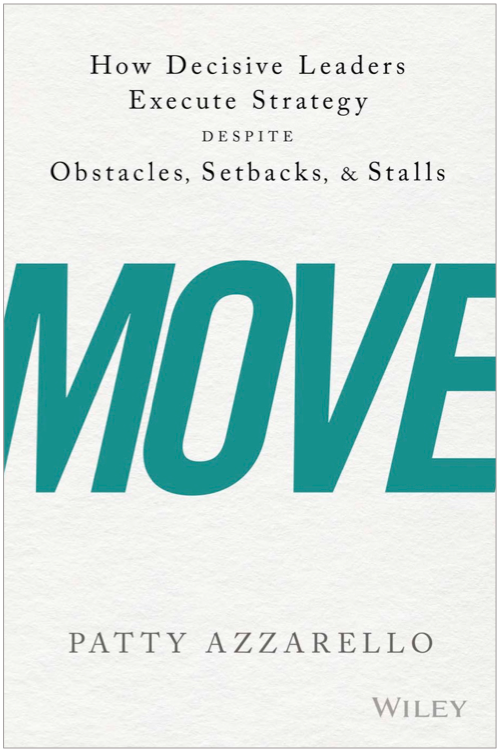Previously…Free service you don’t like
 Awhile back I wrote an article about how BMW “pseudo-service” repels customers.
Awhile back I wrote an article about how BMW “pseudo-service” repels customers.
For those that did not read the prior article, the gist is that as an owner of a new BMW your choice is to get free service from BMW that you dislike (because of the awful and useless, “give me a 5” survey process I described) or to get good, paid-for, service from someone else.
It’s an IQ test. Of course you go for the free service. But you dislike it. You endure it.
Since that post I got messages from so many people that said, “I completely agree, while I love my BMW, I dislike the service/survey experience so much that I do not plan to buy another new BMW.”
Isn’t that awful? Customers not just dis-satisfied — repelled!
Now, the sequel…
My last blog attracted the attention of someone quite high up in the BMW corporate North America operation. I got a phone call…
I must admit I was wondering what the call would be like. Would he be angry? Would he actually be helpful?
Here is what happened.
“Your inputs are very important to us.”
He was very friendly. And it seemed that the purpose of the phone call was for him to tell me “your inputs are very important to us”.
When I asked, “Do you care that your survey process is actually turning customers away?” his reply was fascinating.
He asked me where I lived. I said California. He asked me if all of my service experiences were in California. I said, yes.
Then he went on to say that, “California is strange. We do get the sense that people in California do not like our service, but we are happy with it in the rest of the country”…
OK, so now the reason I experience poor service is that Californians are weird.
I later went to the BMW website and looked at their map of dealerships. (below). If I were a BMW business leader in North America, I would not come to the conclusion that California doesn’t matter.
Customer Service Basics
OK, so what was I really expecting from a phone call?
Most business leaders know that if you have an upset customer it is a tremendous opportunity because the problem gives you a point of connection, and a reason to build a great relationship through your awesome recovery.
Fix what they care about with a show of special attention, and you’ve got a happy customer with a great story to tell – which they tend to tell. (Maybe even on a blog.)
So what could he have done in that phone call if he was motivated to actually do something?
I’ll just go back to customer service basics:
1. Actually care. Go out of your way – I mean really out of your way – to learn as much as you can about why the customer is upset. Ask a lot of questions. Make sure you really understand, and show you care about what the customer is upset about. (And never make the customer feel stupid for being upset.)
2. Accept responsibility and apologize.
2. Fix the problem if you can.
4. Offer Value. If it is too late to fix it, offer something of value. In this case, maybe a free service, a rebate on a new BMW. A hat…. Anything!
5. Demonstrate a commitment to improve. Articulate your immediate next steps to avoid the issue or do something better in the future.
In this conversation, I got nothing from him except a very friendly, useless conversation and the repeated line, “your input is very important to us”.
Something he could have done would be to take me up on an offer I made. I said: In my business I help businesses and their leadership teams get better at what they do. I consult with management teams on improving business operations and customer service all the time.
I would be happy to brainstorm with you and your team (at no charge), some service ideas which would result in happier (higher referring) customers. You have my email address, just send me a note and we’ll schedule a call. This would have achieved #2 (really listening) and #4 (make something better).
His response to this was beyond not interested.
But we need to measure service
He said, “You don’t understand, we have to do those surveys so that we can monitor the level of service our dealerships are providing”.
I replied, “But don’t you see that is not working? Those surveys are not giving you any, real information about the level of service your dealerships are providing. You are not getting accurate picture of how satisfied customers are. Why don’t you try some other things that would get you some real insight?”
He closed with “your input is very important to us”.
This leaves me with two questions that BMW should answer:
1. What does good service look like?
2. How can we measure and monitor our dealerships to make sure they are delivering actual, good service?
Here are some ideas off the top of my head. These are not well-polished ideas, but good ideas come from bad ideas and getting the conversation rolling, so here goes…
Ideas for delivering good service
Idea #1. Help the service appointment fit more seamlessly into the customer’s day.
At one point in the conversation, he said what amounted to, “What is so great about the guy you go to for service now?” I said, “Well, actually I am on a business trip as we speak, and he drove me to the airport”.
This rendered him speechless.
This gives me an idea for actual service: If I owned a BMW dealership within 20 minutes of an airport, I would offer and advertise an on-purpose service, “bring your BMW in for service when you leave for your next business trip, and we’ll drive you to the airport and pick you up when you get back”.
This provides real value and service to the customer.
If it sounds expensive to do this, why not have one of the sales people take the BMW owner to the airport in one of the exciting new models? A chance to build the relationship and get a new model on the customer’s wish list while they are experiencing great service.
Idea #2. Make waiting for service a pleasant and productive experience.
If you are going to have someone wait a few hours for service, why not give them a desk, and internet connection and a phone? I typically sit in the corner of the show room with my laptop on my lap, and a cup of bad coffee on the floor next to me.
While you are at it why not offer a pedicure?
Show your customers that you want to help them use their time well.
What the customer personally experiences during a car service is the waiting.
Most people don’t have an ability to judge the quality of what the technicians are doing. But they will transfer their perception of the quality of the car service to the quality of the waiting experience.
Idea #3. Give service people the opportunity to make customers happy.
BMW’s are not renown for their excellent cup holders. Mine has broken about 6 times in 100k miles. At the BMW dealer it would cost me $200 to get it replaced. With my guy – $50. When I commented on that he said, yes, the part cost $50, and it took me 2 minutes to swap it out so I’m only charging you for the part. That makes me feel like I am being cared for and not ripped off.
Give the service people some flexibility so that they can sometimes throw something in to make a customer feel cared for and happy vs. squeeze every last little drop of profit out of the smallest things. Organizations who are known for excellent customer service typically have a “fix the problem” policy that any employee at any level can spend a set amount of money (like $250) to solve a customer problem on the spot.
At BMW, once the free service expired, I always felt ripped off — like that free service in the beginning was not really free — and then I had to take the annoying survey. The survey asks innane questions like, on a scale of 1-5 how promptly was your service appointment scheduled? Also the survey taker had no ability to take or pass on information about what actually bugged me about the service — and if I don’t give all 5’s, my service rep will call me to yell at me for ratting him out.
Idea #4. Develop and communicate grass roots ideas.
Per the ideas in my last article, the people who are best equipped to understand and improve service are the ones who are delivering it.
Have a contest where dealerships get to compete on ideas to deliver great service. Reward the best ideas and publish them on a service blog. Let the people delivering the service recommend how to improve it.
Ideas to Measure Dealerships Service Delivery
OK… now for some ideas on how to measure the dealerships on service effectiveness.
What is your desired outcome?
If your desired outcome is to collect lots of data that you can use to make yourself feel good about providing service, your surveys are working perfectly.
If your desired outcome is to provide the kind of good service that turns customers into recommenders and repeat buyers you need to do different stuff.
Here are another couple of ideas off the top of my head. (in addition to stopping the surveys which in itself would improve actual service.)
Idea #1. Visit your dealerships
I would put a few people in the busiest regions (see the map above) to visit dealerships, spend time in the service department talking to the service reps and the customers. I am amazed at how many corporations have people who sit at headquarters make decisions about service policies. How can you know what customers think and value without ever personally connecting with sales and service people and their customers.
Idea #2. Have a secret shopper program
Offer free service reimbursement or a rebate on a new purchase to customers who will provide a thoughtful report on their service experience. Let dealers know that they will get visited by a secret shopper who will comment on the quality of their experience.
Idea #3. Get out of HQ
Have all BMW executives take their cars into a dealership for service where nobody knows them. Let them experience what the rest of us go through. And don’t forget to call them at dinner time and make them take the annoying survey.
Idea #4. Reward business performance.
Corporations, stop relying on useless customer survey data and start learning what your customers actually care about. Reward your dealerships on customer referrals and repeat purchases not survey data.
The conclusion
I have purchased a new car. It is not a BMW.
Was this useful?
If you found this article useful, please help me share it with others and encourage them to subscribe to this Blog for free.
About Patty
Patty Azzarello is an executive, best-selling author, speaker and CEO/Business Advisor. She became the youngest general manager at HP at the age of 33, ran a billion dollar software business at 35 and became a CEO for the first time at 38 (all without turning into a self-centered, miserable jerk)
You can find Patty at www.AzzarelloGroup.com, follow her on twitter or facebook, or read her book RISE…3 Practical Steps for Advancing Your Career, Standing Out as a Leader, AND Liking Your Life.




